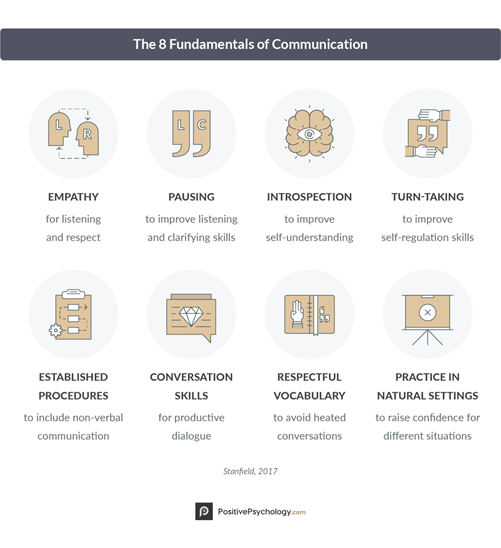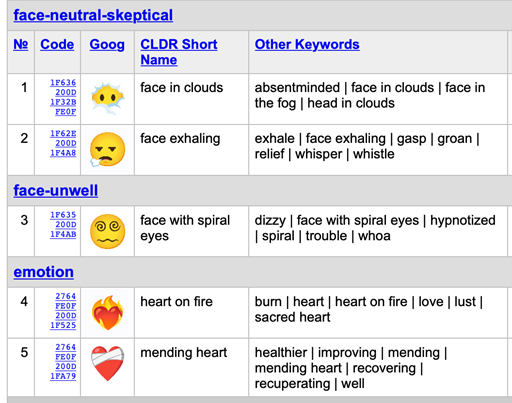
Being able to send messages and talk to other people online is an important part of modern life. With so much being “said” online instead of in-person these days, it is often hard to know what someone really means when they use certain words or add pictures, gifs or emojis to express themselves. Just like in real life it’s important to be polite and respectful when you are online.
While pictures and words have no power on their own, the emotions or feelings they trigger can make other people feel bad or hurt – even without us intending it. Over time, as we communicate more online, we’ve come to know how important it is to choose our words and emojis carefully. But, these are hard lessons that our kids still need to learn, so HOW can we help them to make it a bit easier?
PositivePsychology says “Good communication is a habit, and it needs to start young.” But the 8 fundamental requirements for good and effective communication, are not easily met when it is happening online rather than face to face!

With 217 new emojis approved for 2021, this challenge is getting harder and harder, as the keywords for these new emojis below show:

Unicode emoji charts for version 13.1. From https://blog.emojipedia.org/
We’ve turned a few traditional games into new ways to help your child start thinking about the power of pictures, emojis and words, and how easily they might be used (intentionally or inadvertently) to cyberbully, shame or hurt others.
Play these games with your children to teach them the power of words, and how easily their meaning can be changed:
Chinese Whisper
You know the game where players communicate a whispered word from one ear to another and see how close the result is to the word as it started? In this version, get the first child to whisper their chosen word or sentence to the second child, who then writes down what they heard and passes the paper to the third child who then reads and whispers the word to the next child. The process continues with children alternating whispering what they have read or write down what they have heard until all the players in the circle have had a turn. Once the message, whether whispered or written, reaches the last player, ask him/her to say it aloud. It will be great fun to hear how the word started and how it ended, but will also help demonstrate how intentions and meanings can be distorted in the communication chain.
Pointing directions
This is a good activity to hone your child’s nonverbal communication skills, helping your child understand that successful navigation is possible only when the communication is accurate and precise. Ask your child to write down the directions to a nearby destination like their school, a shop or a friend’s house. Hop in the car together and start the journey, following those written directions to reach the place. On your way, help your child understand how he/she could have communicated the instructions better and why it is so important to mean exactly what you say in written communication, so as not to be misunderstood.
Emoji storytelling
This is an interesting way to help your child understand how emojis and words could be interpreted in different contexts. Write a short story using a combination of words and emojis and get your child to read it out to you. Discuss how close their version of the story was to your actual meaning. Then a ask them to write a short story for you to readout. The results may be hilarious but will also demonstrate how difficult it often is to interpret the true intention or meaning behind written communication, without the visual cues of body language and eye contact. Emojipedia is a great resource for understanding how emojis and pictures are commonly used and understood.
Communicating clearly and effectively is a vital 21st-century life skill that your child will need to build and grow. Keep these pointers in mind as you guide them on the way:
- Choose your words carefully, to be clearly understood.
- Take care when using humour or sarcasm – when you’re talking to someone face-to-face, you can say a lot with your body language and tone of voice that you can’t convey with just words.
- Remember that even if your intent seems obvious to you, it may not be to other people.
- Keep it respectful – when you’re sitting behind a screen, it’s easy to forget that there are real people on the other side.
- Pause before reacting – even if you’re upset by what someone else is saying online, reflect and THINK before you lash out.
- As a general rule, try not to say anything online that you wouldn’t say to someone’s face.
- If you disagree with someone, address what they’re saying rather than attacking them as a person.
- Read what you have written before pushing send!
- Verify information before sharing it – there is a lot of fake news out there that can cause real harm, so be critical of things you read on the Internet.
- Think about who can see what you write or post online and how it adds to your digital footprint or “tattoo” – a permanent record of your words that may eventually be viewed by friends, family, strangers, and even employers.
Be In Touch is a passionate team of family digital wellness activists, working with schools, parents, learners, NGOs, corporates and government. Collecting real data on what kids are doing and experiencing online (including online exposure to cyberbullying, stranger contact, pornography, violence, self-harm, drugs & alcohol), they use this to pinpoint practical and implementable solutions. Their aim is to simplify the complicated world of family digital wellness and online safety, with practical resources, products and solutions that parents and children really need! Sign up for their newsletter and follow them on Facebook and Instagram for great tips that will help your whole family!



